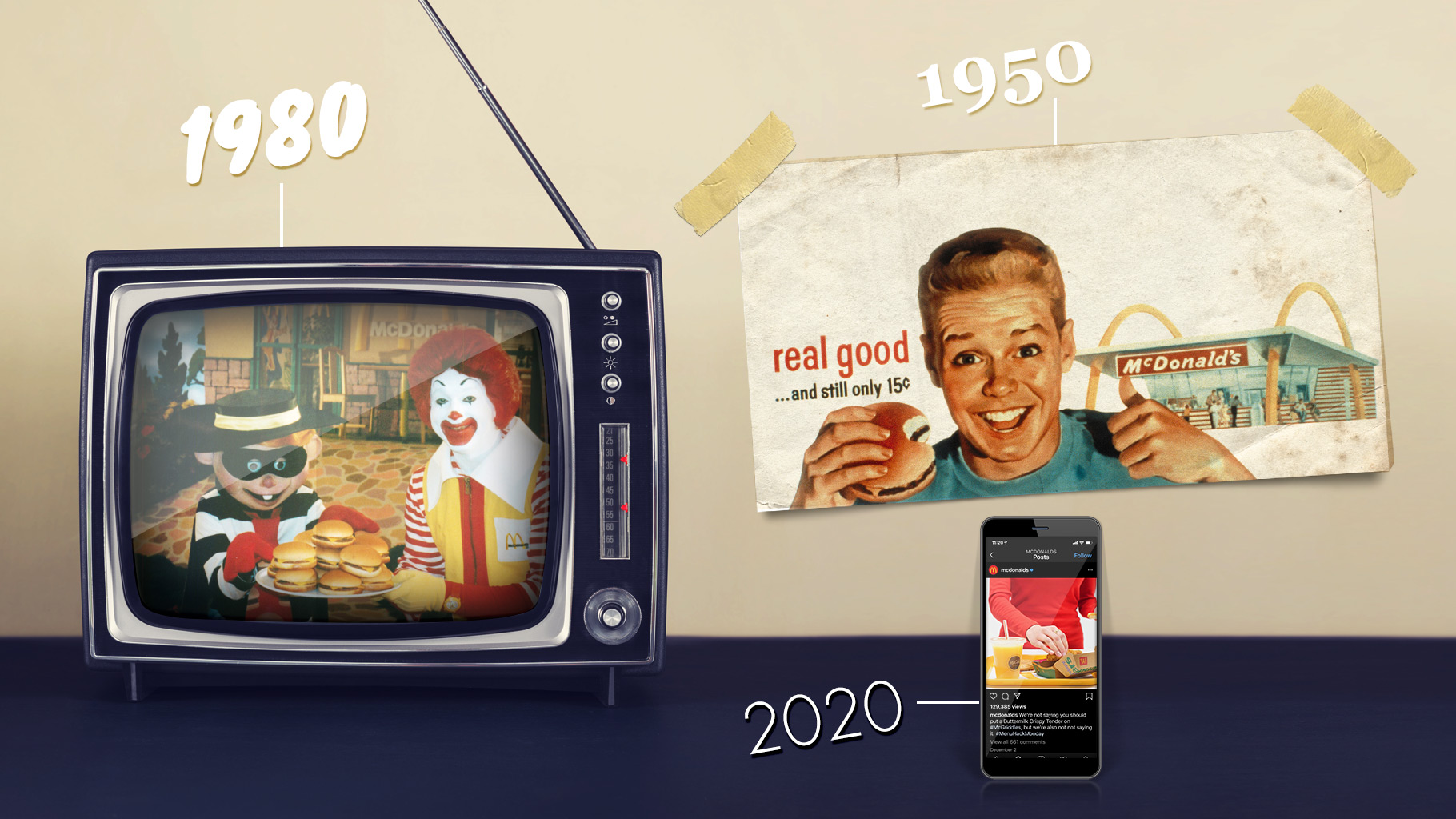Marketing Through the Ages
The decade is coming to a close and it got us thinking… Here at Ciniva we view marketing as an art form and like all creative institutions it has a rich history. We wanted to work our way through a high-level overview of marketing through the ages, decade by decade. Let’s start in the 1950s; “The Decade of Consumerism.”

The 1950s
Marketing painted the picture of the optimal life. It was the FOMO era before we knew what FOMO was. Each household member had a unique role and marketers dialed in. The “man, woman, and child” archetypes had their own tried and true methodology. Media buys were dominated by companies that offered products that improved home life: appliances, furniture, decor, tools, etc.
Perhaps unintentionally Marketing illustrated the concept of the “ideal American life” for products as simple as TV dinners. Convenience and comfort were key. This always came with the portrayal of the nuclear family.
The 1960s
This trend continued into the 60s but as more homes gathered around the TV set instead of the radio, advertising evolved with the times. The idea that advertising presented you with your ideal life still existed but the nuclear family started to disappear and ads focused on the individual. What makes the ideal father, husband, man…
The 1970s
By the time the 70s were in full swing, marketers had grasped how much powerful TV was for distributing information, campaigns drifted away from the ideal and sought to highlight real advantages. You were smarter for choosing the product but not necessarily better.

The 1980s
The 80s saw the birth of true culture in advertising. With cable, MTV is a great example, taking much of the TV viewership ads needed to not make such a stark contrast between themselves and the programs they interrupted. Strong visuals and shock value saw success as Superbowl commercials became the new high stakes game for the 30-second spot.
The 1990s
Here comes the internet. This era pushed the need for companies to operate as a unified entity. With information so easily shared and so many new touchpoints created companies naturally shifted to mission-driven “brands.” These newly defined brands then recognized the web’s opportunities in erratic stages. The first eCommerce iterations went up, yellow page style listings, industry message boards. It was a new level of accessibility.
The 2000s
Social media added another layer to the idea of brand. Real-time communication, community building, and most importantly content creation. Unifying voice and tone had never been as important before. Everyone with a phone had access to their favorite brands and their statements. Not to mention this communication existed on the same platform where users felt most comfortable staying in touch with their world.
The 2010s
Marketing was no longer about interrupting culture with a memorable moment. The need to capture attention still remained but technology offered a new level of control over our own environments. Interruptions from marketers felt unnatural, out-of-place, and often predatory. Brands need to validate their presence on the right platforms and contribute to the culture and communities they want to engage with. Brand need to tell stories, work with partners to create content that extends well beyond it’s advertising purpose. It’s about being human. Celebrating what makes humans unique.
The 2020s
Wondering what’s the right modern strategy for your brand in 2020? Let’s talk!